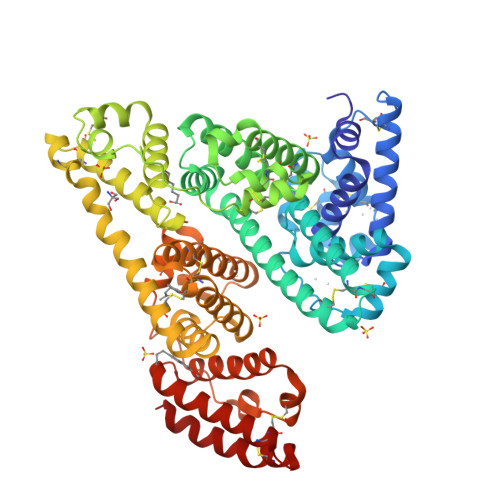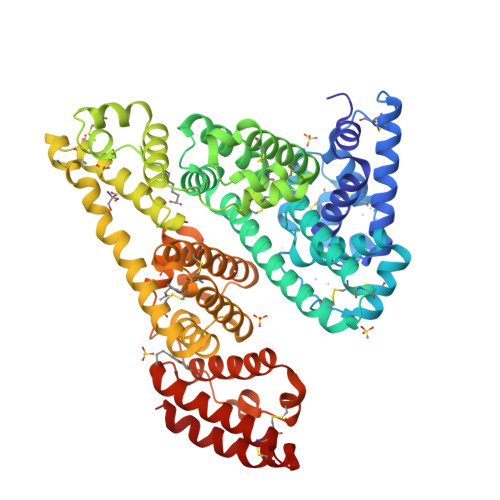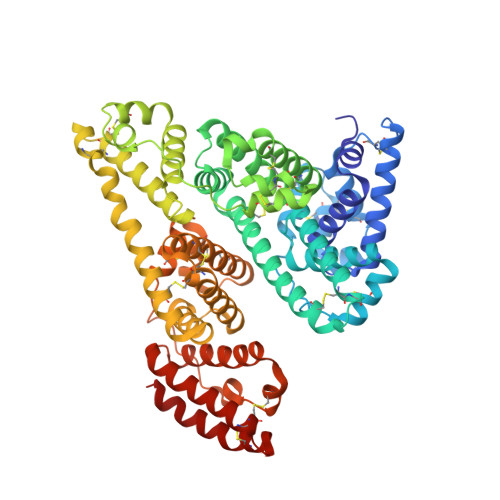Albumin-Based Transport of Nonsteroidal Anti-Inflammatory Drugs in Mammalian Blood Plasma.
Czub, M.P., Handing, K.B., Venkataramany, B.S., Cooper, D.R., Shabalin, I.G., Minor, W.(2020) J Med Chem
- PubMed: 32469516
- DOI: https://doi.org/10.1021/acs.jmedchem.0c00225
- Primary Citation of Related Structures:
5V0V, 6CI6, 6U4R, 6U4X, 6U5A - PubMed Abstract:
Every day, hundreds of millions of people worldwide take nonsteroidal anti-inflammatory drugs (NSAIDs), often in conjunction with multiple other medications. In the bloodstream, NSAIDs are mostly bound to serum albumin (SA). We report the crystal structures of equine serum albumin complexed with four NSAIDs (ibuprofen, ketoprofen, etodolac, and nabumetone) and the active metabolite of nabumetone (6-methoxy-2-naphthylacetic acid, 6-MNA). These compounds bind to seven drug-binding sites on SA. These sites are generally well-conserved between equine and human SAs, but ibuprofen binds to both SAs in two drug-binding sites, only one of which is common. We also compare the binding of ketoprofen by equine SA to binding of it by bovine and leporine SAs. Our comparative analysis of known SA complexes with FDA-approved drugs clearly shows that multiple medications compete for the same binding sites, indicating possibilities for undesirable physiological effects caused by drug-drug displacement or competition with common metabolites. We discuss the consequences of NSAID binding to SA in a broader scientific and medical context, particularly regarding achieving desired therapeutic effects based on an individual's drug regimen.
Organizational Affiliation:
Department of Molecular Physiology and Biological Physics, University of Virginia, 1340 Jefferson Park Avenue, Charlottesville, Virginia 22908, United States.





















